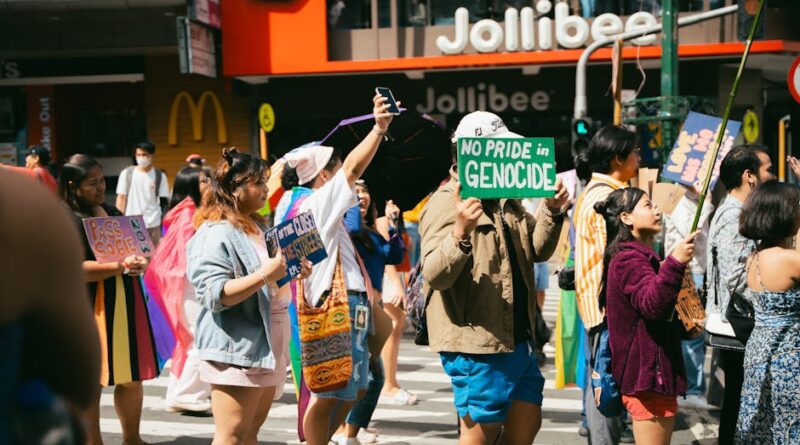The Impact of Migration on Cultural Diversity
Migration has been a fundamental aspect of human civilization for centuries, shaping societies, economies, and cultures in profound ways. As people move across borders and settle in new lands, they bring with them a rich tapestry of traditions, beliefs, languages, and customs. This influx of diversity can have both positive and negative effects on the cultural landscape of a nation. In this article, we will explore the intricate relationship between migration and cultural diversity, delving into the various dimensions of this complex phenomenon.
Historical Perspectives on Migration

Throughout history, migration has played a crucial role in the development of societies around the world. From the ancient Silk Road connecting East and West to the transatlantic slave trade that forcibly displaced millions of Africans, human movement has left an indelible mark on cultures and civilizations. The exchange of ideas, technologies, and artistic expressions facilitated by migration has enriched the cultural heritage of nations and contributed to the diversity we see today.
For example, the Italian diaspora spread Italian cuisine, art, and music to distant corners of the globe, influencing local cultures and creating new fusion cuisines such as Italian-American cuisine in the United States. Similarly, the migration of African people to the Americas during the slave trade brought vibrant musical traditions like jazz, blues, and gospel to the forefront of American culture, shaping the development of popular music genres.
The Role of Migration in Cultural Exchange

Migration serves as a powerful catalyst for cultural exchange, fostering a dynamic interchange of ideas, beliefs, and practices between different communities. When individuals from diverse backgrounds come together, they often engage in a process of cultural integration, where they borrow elements from each other’s traditions and create new hybrid identities. This blending of cultures can lead to the emergence of vibrant multicultural societies that celebrate diversity and promote tolerance.
One striking example of cultural exchange through migration is the spread of yoga from its origins in ancient India to Western countries like the United States and the United Kingdom. As Indian migrants introduced yoga to their new communities, it gained popularity among people of all backgrounds, leading to the establishment of yoga studios and retreat centers worldwide. Today, yoga has become a global phenomenon, transcending cultural boundaries and promoting physical and mental well-being in diverse populations.
Challenges of Cultural Preservation

While migration can enhance cultural diversity, it also poses challenges to the preservation of indigenous traditions and languages. As migrants adapt to their new environments and embrace the dominant culture, they may gradually lose touch with their ancestral heritage, leading to the erosion of traditional practices and knowledge. In some cases, indigenous languages face extinction as younger generations prioritize learning the language of the host country for social and economic reasons.
For instance, the Maori language in New Zealand has experienced a decline in speakers due to the impact of colonization and the dominance of the English language. Efforts to revitalize the Maori language through education initiatives and cultural programs have been ongoing, but the preservation of indigenous languages remains a pressing concern in the face of globalization and migration.
Social Cohesion and Integration

Migration can have a significant impact on social cohesion and integration within a society, influencing the attitudes and perceptions of both migrants and host communities. Successful integration of migrants involves building bridges between diverse groups, fostering mutual understanding, and promoting inclusivity. When cultural diversity is valued and respected, it can enrich social interactions, broaden perspectives, and promote a sense of unity among individuals from different backgrounds.
Conversely, issues such as discrimination, xenophobia, and cultural stereotypes can hinder the integration process and create barriers to social cohesion. Migrants may face challenges in accessing education, healthcare, and employment opportunities, leading to social exclusion and marginalization. Addressing these systemic inequalities requires a comprehensive approach that addresses the root causes of discrimination and promotes equality and social justice for all members of society.
Economic Impacts of Migration
Migration has significant economic implications for both sending and receiving countries, influencing labor markets, productivity, and economic growth. Migrants often contribute to the workforce in sectors where there is a shortage of skilled labor, filling essential roles in industries such as healthcare, agriculture, and hospitality. Their contributions help drive innovation, entrepreneurship, and diversity in the workplace, leading to a more dynamic and competitive economy.
For example, Silicon Valley in the United States has thrived as a hub of innovation and technology due in part to the contributions of immigrant entrepreneurs and engineers from around the world. Companies like Google, Apple, and Tesla have been founded or led by immigrants who have brought their skills, expertise, and diverse perspectives to the forefront of the tech industry. This influx of talent has fueled growth and prosperity in Silicon Valley, showcasing the positive impact of migration on economic development.
Environmental and Sustainability Considerations
Migration can also have environmental implications, particularly in the context of climate change and natural disasters. As extreme weather events and environmental degradation force communities to migrate in search of safer and more sustainable living conditions, the cultural diversity of affected regions may undergo significant changes. Displacement due to environmental factors can lead to the loss of traditional livelihoods, cultural practices, and relationships with the land, posing challenges to the preservation of cultural heritage.
In response to these challenges, initiatives such as climate-resilient housing, sustainable agriculture, and community-based adaptation projects are being implemented to support vulnerable populations and protect cultural diversity in the face of environmental threats. By promoting sustainable development practices and fostering resilience among communities, these initiatives aim to safeguard the cultural heritage of diverse populations and ensure a more equitable and sustainable future for all.
Expert Opinions
According to cultural anthropologist Dr. Maria Rodriguez, “Migration has always been a driving force behind cultural evolution and change. As people move and settle in new places, they bring with them a wealth of knowledge, traditions, and perspectives that enrich the cultural landscape of their host communities. Embracing diversity and promoting intercultural dialogue are essential steps towards building inclusive societies that celebrate the richness of human experience.”
Dr. James Smith, an economist specializing in migration studies, emphasizes the economic benefits of migration, stating that “Migrants play a vital role in filling labor gaps, stimulating innovation, and boosting economic growth in host countries. By harnessing the talents and skills of migrants, societies can achieve greater prosperity and resilience in the face of global challenges.”
Conclusion
In conclusion, the impact of migration on cultural diversity is a multifaceted phenomenon that shapes the social, economic, and environmental fabric of societies worldwide. From historical exchanges of ideas and traditions to contemporary challenges of integration and preservation, migration has a profound influence on the cultural dynamics of communities. By embracing diversity, promoting inclusivity, and fostering dialogue among individuals from different backgrounds, we can build more resilient, vibrant, and cohesive societies that celebrate the richness of human experience.
As we navigate the complexities of migration and cultural diversity in an increasingly interconnected world, it is essential to recognize the value of cultural heritage, the importance of social cohesion, and the need for sustainable development practices that promote equity and inclusion. By working together to address the challenges and opportunities presented by migration, we can create a more harmonious and prosperous future for all members of society.




